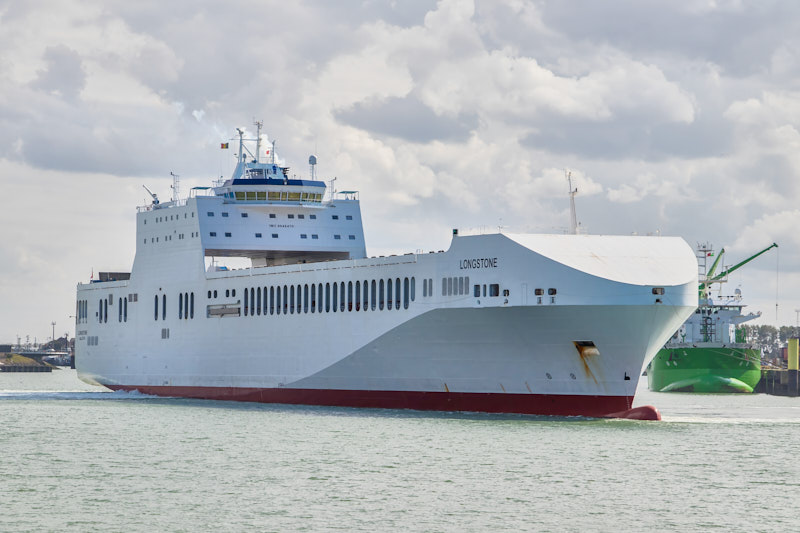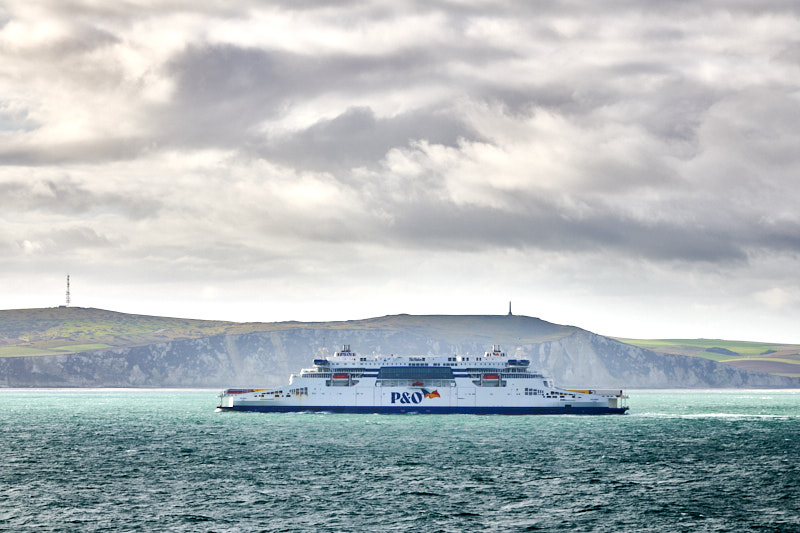Interview with Peter Hebblethwaite, CEO of P&O Ferries
Conducted by Mike Louagie, Ferry Shipping News, 8 October.
Conducted by Mike Louagie, Ferry Shipping News, 8 October.
Question: What is the long-term strategy for P&O Ferries in light of the changing shipping and transport landscape? Especially the link/cooperation with DP World?
We are proud to be part of the DP World family. While P&O Ferries remains an independently incorporated business, we are wholly owned by DP World, which has been incredibly supportive. Our ambitions are aligned with DP World’s global end-to-end supply chain vision. They have a large footprint in terminals, logistics, and feeder businesses, and we are positioning P&O Ferries to fit into this global network.
Our strategy began with cost efficiency, ensuring we have a dynamic and competitive cost base. The second step is growth, with a focus on freight. We are reducing dependency on the Dover-Calais route and developing our North Sea strategy, offering multimodal opportunities for customers through key hubs in Europort and Zeebrugge.
The third step is expanding our passenger business, as we see strong potential where we combine freight and passenger services. We will continue aligning with DP World’s larger network ambitions.
Question: Does the space-charter with Irish Ferries differ from that with DFDS?
Yes, there are some key differences. The Irish Ferries arrangement is more focused on operational efficiency. Previously, we had fixed allocations with DFDS, meaning each company had a set percentage of ship capacity. If one party didn’t have enough freight to fill their share, the ship would leave underutilised.
With Irish Ferries, we’ve adopted a “turn up and go” service. This means we load whatever is on the quay, ensuring the ships leave full. This change is expected to improve port throughput by up to 25%, and the system is already showing positive results with minimal teething issues.
Question: Is there a possibility to have a similar collaboration on longer routes, like the North Sea?
It’s not as straightforward on the North Sea routes because there are fewer ports where we and a competitor share terminals at both ends. However, we are always open to collaboration opportunities, particularly given the high operational costs of running these businesses. Collaboration is something we have seen in the feeder and deep-sea container sectors, and it’s an approach we are exploring for ferry services.
Question: What is the freight sales arrangement with Irish Ferries on the Larne-Cairnryan route?
It’s a light-touch collaboration, where Irish Ferries can sell crossings on our ships to their customers. The Irish Sea, especially Larne, is a very interesting area for us. We own the ports at Larne and Cairnryan, and there is significant potential there. We’re pleased with the relationship with Irish Ferries and are exploring how we can better service customers on this route.
Question: You sold one of your ships (Spirit of Britain) to a competitor on the same route (Irish Ferries). Isn’t that unusual?
It might seem unusual, but we didn’t need four ships, and it was part of our effort to right-size our fleet. Operating these large vessels half-empty was inefficient. Irish Ferries made us a strong offer for Spirit of Britain, which allowed us to reduce external debt and improve financial stability. While Spirit of France isn’t for sale, we will continue to evaluate opportunities to optimise our fleet as part of the broader transformation of our business.
Question: Which markets do you see having the most potential over the next few years?
Our current focus is on enhancing the ferry proposition on the Dover-Calais route, where there’s still work to be done. The North Sea also presents an exciting opportunity. We’ve invested in creating a unique freight network, connecting with hubs like Europort and Zeebrugge, which have strong rail connectivity to the continent. We believe our network, large ships, and efficient operations will create a unique value proposition for our customers.
Question: You’ve chartered the LONGSTONE and LISMORE for the North Sea. What’s the logic behind this move, especially after previously removing the BORE SONG from service?
At that time, we didn’t have the full network and strategy in place, and running ships that were too expensive for the trade didn’t make sense. Now, with our evolving transformation and long-term strategy, the decision to charter these ships supports our commitment to growth and efficiency in the North Sea market.

LONGSTONE – Photo Tibo Deprest
Question: How does the collaboration between P&O Ferries and DP World work at Zeebrugge?
We are very much part of the DP World family, and this provides synergies between our ferry services and DP World’s logistics operations. For example, DP World took over part of our concession at Zeebrugge to service an EV contract, allowing us to right-size our operation there. This is a great example of how being part of the DP World family benefits both parties, and we are exploring more opportunities to create synergies in the future.
Question: How will the new ETIAS Travel Authorisation and UK ETA affect passenger flows at ports like Dover and Calais?
We are in regular contact with both the government and the ports, and we’re working to ensure that the implementation of these new systems creates as little friction as possible. Our focus is on making ferry travel as seamless as possible for our customers, and we’re doing everything we can to support a smooth transition to the new requirements.
Question: What is P&O Ferries doing to adapt to industry trends like sustainability, digitalisation, and automation?
We have set ambitious goals as part of the DP World family, aiming to reduce our carbon footprint by 42% between 2022 and 2030. In the first year, we achieved a 9% reduction, thanks to improved efficiency and better fleet utilisation. Our two new ships burn 40% less fuel than their predecessors, and we continue to replace older vessels with more efficient ones.
We’re also investing in digitalisation. We are replacing legacy systems and implementing AI to better target customers and improve our operations. Additionally, our “smart ship” system allows us to monitor fuel efficiency and optimise operations in real time (from the headquarters in Dover), which is part of our broader commitment to sustainability and efficiency.

P&O PIONEER – Photo Mike Louagie